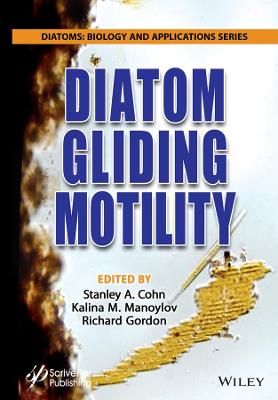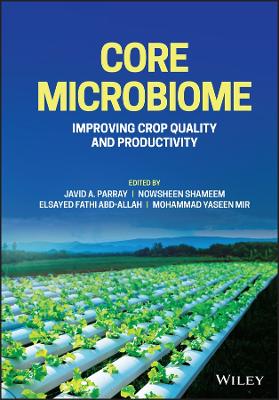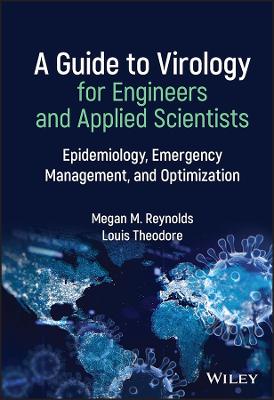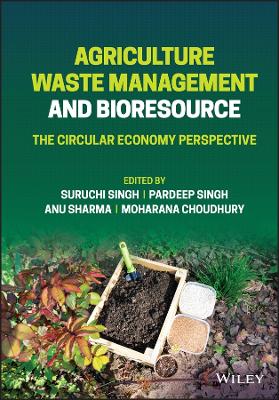Diatom Gliding Motility
 -15%
portes grátis
-15%
portes grátis
Diatom Gliding Motility
Cohn, Stanley A.; Gordon, Richard; Manoylov, Kalina M.
John Wiley & Sons Inc
11/2021
480
Dura
Inglês
9781119526353
15 a 20 dias
1150
Descrição não disponível.
Preface xxvii
1 Some Observations of Movements of Pennate Diatoms in Cultures and Their Possible Interpretation 1
Thomas Harbich
1.1 Introduction 2
1.2 Kinematics and Analysis of Trajectories in Pennate Diatoms with Almost Straight Raphe along the Apical Axis 3
1.3 Curvature of the Trajectory at the Reversal Points 9
1.4 Movement of Diatoms in and on Biofilms 13
1.5 Movement on the Water Surface 16
1.6 Formation of Flat Colonies in Cymbella lanceolata 23
1.7 Conclusion 29
References 29
2 The Kinematics of Explosively Jerky Diatom Motility: A Natural Example of Active Nanofluidics 33
Ahmet C. Sabuncu, Richard Gordon, Edmond Richer, Kalina M. Manoylov and Ali Beskok
2.1 Introduction 34
2.2 Material and Methods 35
2.2.1 Diatom Preparation 35
2.2.2 Imaging System 35
2.2.3 Sample Preparation 36
2.2.4 Image Processing 36
2.3 Results and Discussion 41
2.3.1 Comparison of Particle Tracking Algorithms 41
2.3.2 Stationary Particles 42
2.3.3 Diatom Centroid Measurements 43
2.3.4 Diatom Orientation Angle Measurements 46
2.3.5 Is Diatom Motion Characterized by a Sequence of Small Explosive Movements? 49
2.3.6 Future Work 50
2.4 Conclusions 51
Appendix 52
References 59
3 Cellular Mechanisms of Raphid Diatom Gliding 65
Yekaterina D. Bedoshvili and Yelena V. Likhoshway
3.1 Introduction 65
3.2 Gliding and Secretion of Mucilage 67
3.3 Cell Mechanisms of Mucilage Secretion 68
3.4 Mechanisms of Gliding Regulation 71
3.5 Conclusions 72
Acknowledgments 72
References 73
4 Motility of Biofilm-Forming Benthic Diatoms 77
Karen Grace Bondoc-Naumovitz and Stanley A. Cohn
4.1 Introduction 77
4.2 General Motility Models and Concepts 86
4.2.1 Adhesion 87
4.2.2 Gliding Motility 89
4.2.3 Motility and Environmental Responsiveness 91
4.3 Light-Directed Vertical Migration 93
4.4 Stimuli-Directed Movement 94
4.4.1 Nutrient Foraging 94
4.4.2 Pheromone-Based Mate-Finding Motility 97
4.4.3 Prioritization Between Co-Occurring Stimuli 99
4.5 Conclusion 99
References 100
5 Photophobic Responses of Diatoms - Motility and Inter-Species Modulation 111
Stanley A. Cohn, Lee Warnick and Blake Timmerman
5.1 Introduction 112
5.2 Types of Observed Photoresponses 112
5.2.1 Light Spot Accumulation 112
5.2.2 High-Intensity Light Responses 114
5.3 Inter-Species Effects of Light Responses 118
5.3.1 Inter-Species Effects on High Irradiance Direction Change Response 119
5.3.2 Inter-Species Effects on Cell Accumulation into Light Spots 123
5.4 Summary 123
References 131
6 Diatom Biofilms: Ecosystem Engineering and Niche Construction 135
David M. Paterson and Julie A. Hope
6.1 Introduction 135
6.1.1 Diatoms: A Brief Portfolio 135
6.1.2 Benthic Diatoms as a Research Challenge 136
6.2 The Microphytobenthos and Epipelic Diatoms 136
6.3 The Ecological Importance of Locomotion 137
6.4 Ecosystem Engineering and Functions 139
6.4.1 Ecosystem Engineering 139
6.4.2 Ecosystem Functioning 140
6.5 Microphytobenthos as Ecosystem Engineers 141
6.5.1 Sediment Stabilization 141
6.5.2 Beyond the Benthos 143
6.5.3 Diatom Architects 144
6.5.4 Working with Others: Combined Effects 144
6.5.5 The Dynamic of EPS 145
6.5.6 Nutrient Turnover and Biogeochemistry 145
6.6 Niche Construction and Epipelic Diatoms 146
6.7 Conclusion 149
Acknowledgments 150
References 150
7 Diatom Motility: Mechanisms, Control and Adaptive Value 159
Joao Serodio
7.1 Introduction 159
7.2 Forms and Mechanisms of Motility in Diatoms 160
7.2.1 Motility in Centric Diatoms 160
7.2.2 Motility in Pennate Raphid Diatoms 161
7.2.3 Motility in Other Substrate-Associated Diatoms 162
7.2.4 Vertical Migration in Diatom-Dominated Microphytobenthos 163
7.3 Controlling Factors of Diatom Motility 164
7.3.1 Motility Responses to Vectorial Stimuli 164
7.3.1.1 Light Intensity 164
7.3.1.2 Light Spectrum 165
7.3.1.3 UV Radiation 166
7.3.1.4 Gravity 166
7.3.1.5 Chemical Gradients 167
7.3.2 Motility Responses to Non-Vectorial Stimuli 167
7.3.2.1 Temperature 167
7.3.2.2 Salinity 168
7.3.2.3 pH 168
7.3.2.4 Calcium 168
7.3.2.5 Other Factors 169
7.3.2.6 Inhibitors of Diatom Motility 169
7.3.3 Species-Specific Responses and Interspecies Interactions 169
7.3.4 Endogenous Control of Motility 170
7.3.5 A Model of Diatom Vertical Migration Behavior in Sediments 170
7.4 Adaptive Value and Consequences of Motility 172
7.4.1 Planktonic Centrics 172
7.4.2 Benthic Pennates 173
7.4.3 Ecological Consequences of Vertical Migration 175
7.4.3.1 Motility-Enhanced Productivity 175
7.4.3.2 Carbon Cycling and Sediment Biostabilization 176
Acknowledgments 176
References 176
8 Motility in the Diatom Genus Eunotia Ehrenb. 185
Paula C. Furey
8.1 Introduction 185
8.2 Accounts of Movement in Eunotia 188
8.3 Motility in the Context of Valve Structure 194
8.3.1 Motility and Morphological Characteristics in Girdle View 194
8.3.2 Motility and Morphological Characteristics in Valve View 196
8.3.3 Motility and the Rimoportula 198
8.4 Motility and Ecology of Eunotia 198
8.4.1 Substratum-Associated Environments 199
8.4.2 Planktonic Environments 201
8.5 Motility and Diatom Evolution 202
8.6 Conclusion and Future Directions 203
Acknowledgements 204
References 205
9 A Free Ride: Diatoms Attached on Motile Diatoms 211
Vincent Roubeix and Martin Laviale
9.1 Introduction 211
9.2 Adhesion and Distribution of Epidiatomic Diatoms on Their Host 213
9.3 The Specificity of Host-Epiphyte Interactions 215
9.4 Cost-Benefit Analysis of Host-Epiphyte Interactions 217
9.5 Conclusion 219
References 219
10 Towards a Digital Diatom: Image Processing and Deep Learning Analysis of Bacillaria paradoxa Dynamic Morphology 223
Bradly Alicea, Richard Gordon, Thomas Harbich, Ujjwal Singh, Asmit Singh and Vinay Varma
10.1 Introduction 224
10.1.1 Organism Description 224
10.1.2 Research Motivation 227
10.2 Methods 228
10.2.1 Video Extraction 228
10.2.2 Deep Learning 230
10.2.3 DeepLabv3 Analysis 234
10.2.4 Primary Dataset Analysis 234
10.2.5 Data Availability 235
10.3 Results 235
10.3.1 Watershed Segmentation and Canny Edge Detection 235
10.3.2 Deep Learning 236
10.4 Conclusion 243
Acknowledgments 245
References 245
11 Diatom Triboacoustics 249
Ille C. Gebeshuber, Florian Zischka, Helmut Kratochvil, Anton Noll, Richard Gordon and Thomas Harbich
Glossary 249
11.1 State-of-the-Art 251
11.1.1 Diatoms and Their Movement 251
11.1.2 The Navier-Stokes Equation 252
11.1.3 Low Reynolds Number 253
11.1.4 Reynolds Number for Diatoms 254
11.1.5 Further Thoughts About Movement of Diatoms 254
11.1.6 Possible Reasons for Diatom Movement 255
11.1.7 Underwater Acoustics, Hydrophones 256
11.1.7.1 Underwater Acoustics 256
11.1.7.2 Hydrophones 257
11.2 Methods 257
11.2.1 Estimate of the Momentum of a Moving Diatom 257
11.2.2 On the Speed of Expansion of the Mucopolysaccharide Filaments 258
11.2.2.1 Estimation of Radial Expansion 258
11.2.2.2 Sound Generation 261
11.2.3 Gathering Diatoms 266
11.2.3.1 Purchasing Diatom Cultures 267
11.2.3.2 Diatoms from the Wild 267
11.2.4 Using a Hydrophone to Detect Possible Acoustic Signals from Diatoms 269
11.2.4.1 First Setup 269
11.2.4.2 Second Setup 271
11.3 Results and Discussion 272
11.3.1 Spectrograms 272
11.3.2 Discussion 277
11.4 Conclusions and Outlook 277
Acknowledgements 279
References 279
12 Movements of Diatoms VIII: Synthesis and Hypothesis 283
Jean Bertrand
12.1 Introduction 283
12.2 Review of the Conditions Necessary for Movements 284
12.3 Hypothesis 285
12.4 Analysis - Comparison with Observations 288
12.4.1 Translational Apical Movement 288
12.4.2 The Transapical Toppling Movement 290
12.4.3 Diverse Pivoting 290
12.5 Conclusion 291
Acknowledgments 292
References 292
13 Locomotion of Benthic Pennate Diatoms: Models and Thoughts 295
Jiadao Wang, Ding Weng, Lei Chen and Shan Cao
13.1 Diatom Structure 295
13.1.1 Ultrastructure of Frustules 295
13.1.2 Bending Ability of Diatoms 297
13.2 Models for Diatom Locomotion 300
13.2.1 Edgar Model for Diatom Locomotion 300
13.2.2 Van der Waals Force Model (VW Model) for Diatom Locomotion 302
13.2.2.1 Locomotion Behavior of Diatoms 302
13.2.2.2 Moving Organelles and Pseudopods 304
13.2.2.3 Chemical Properties of Mucilage Trails 307
13.2.2.4 Mechanical Properties of Mucilage Trails 310
13.2.2.5 VW Model for Diatom Locomotion 314
13.3 Locomotion and Aggregation of Diatoms 319
13.3.1 Locomotion Trajectory and Parameters of Diatoms 319
13.4 Simulation on Locomotion, Aggregation and Mutual Perception of Diatoms 323
13.4.1 Simulation Area and Parameters 323
13.4.2 Diatom Life Cycle and Modeling Parameters 323
13.4.3 Simulation Results of Diatom Locomotion Trajectory with Mutual Perception 326
13.4.4 Simulation Results of Diatom Adhesion with Mutual Perception 327
13.4.5 Adhesion and Aggregation Mechanism of Diatoms 331
References 332
14 The Whimsical History of Proposed Motors for Diatom Motility 335
Richard Gordon
14.1 Introduction 336
14.2 Historical Survey of Models for the Diatom Motor 338
14.2.1 Diatoms Somersault via Protruding Muscles (1753) 338
14.2.2 Vibrating Feet or Protrusions Move Diatoms (1824) 338
14.2.3 Diatoms Crawl Like Snails (1838) 342
14.2.4 The Diatom Motor is a Jet Engine (1849) 344
14.2.5 Rowing Diatoms (1855) 346
14.2.6 Diatoms Have Protoplasmic Tank Treads (1865) 350
14.2.7 Diatoms as the Flame of Life: Capillarity (1883) 354
14.2.8 Bellowing Diatoms (1887) 355
14.2.9 Jelly Powered Jet Skiing Diatoms (1896) 355
14.2.10 Bubble Powered Diatoms (1905) 358
14.2.11 Diatoms Win: "I Have No New Theory to Offer and See No Reason to Use Those Already Abandoned" (1940) 360
14.2.12 Is Diatom Motility a Special Case of Cytoplasmic Streaming? (1943) 360
14.2.13 Diatom Adhesion as a Sliding Toilet Plunger (1966) 365
14.2.14 Diatom as a Monorail that Lays Its Own Track (1967) 366
14.2.15 The Diatom as a "Compressed Air" Coanda Effect Gliding Vehicle (1967) 368
14.2.16 The Electrokinetic Diatom (1974) 371
14.2.17 The Diatom Clothes Line or Railroad Track (1980) 372
14.2.18 Diatom Ion Cyclotron Resonance (1987) 374
14.2.19 Diatoms Do Internal Treadmilling (1998) 375
14.2.20 Surface Treadmilling, Swimming and Snorkeling Diatoms (2007) 376
14.2.21 Acoustic Streaming: The Diatom as Vibrator or Jack Hammer (2010) 378
14.2.22 Propulsion of Diatoms Via Many Small Explosions (2020) 379
14.2.23 Diatoms Walk Like Geckos (2019) 380
14.3 Pulling What We Know and Don't Know Together, about the Diatom Motor 381
14.4 Membrane Surfing: A New Working Hypothesis for the Diatom Motor (2020) 393
Acknowledgments 397
References 397
Appendix 420
Index 421
1 Some Observations of Movements of Pennate Diatoms in Cultures and Their Possible Interpretation 1
Thomas Harbich
1.1 Introduction 2
1.2 Kinematics and Analysis of Trajectories in Pennate Diatoms with Almost Straight Raphe along the Apical Axis 3
1.3 Curvature of the Trajectory at the Reversal Points 9
1.4 Movement of Diatoms in and on Biofilms 13
1.5 Movement on the Water Surface 16
1.6 Formation of Flat Colonies in Cymbella lanceolata 23
1.7 Conclusion 29
References 29
2 The Kinematics of Explosively Jerky Diatom Motility: A Natural Example of Active Nanofluidics 33
Ahmet C. Sabuncu, Richard Gordon, Edmond Richer, Kalina M. Manoylov and Ali Beskok
2.1 Introduction 34
2.2 Material and Methods 35
2.2.1 Diatom Preparation 35
2.2.2 Imaging System 35
2.2.3 Sample Preparation 36
2.2.4 Image Processing 36
2.3 Results and Discussion 41
2.3.1 Comparison of Particle Tracking Algorithms 41
2.3.2 Stationary Particles 42
2.3.3 Diatom Centroid Measurements 43
2.3.4 Diatom Orientation Angle Measurements 46
2.3.5 Is Diatom Motion Characterized by a Sequence of Small Explosive Movements? 49
2.3.6 Future Work 50
2.4 Conclusions 51
Appendix 52
References 59
3 Cellular Mechanisms of Raphid Diatom Gliding 65
Yekaterina D. Bedoshvili and Yelena V. Likhoshway
3.1 Introduction 65
3.2 Gliding and Secretion of Mucilage 67
3.3 Cell Mechanisms of Mucilage Secretion 68
3.4 Mechanisms of Gliding Regulation 71
3.5 Conclusions 72
Acknowledgments 72
References 73
4 Motility of Biofilm-Forming Benthic Diatoms 77
Karen Grace Bondoc-Naumovitz and Stanley A. Cohn
4.1 Introduction 77
4.2 General Motility Models and Concepts 86
4.2.1 Adhesion 87
4.2.2 Gliding Motility 89
4.2.3 Motility and Environmental Responsiveness 91
4.3 Light-Directed Vertical Migration 93
4.4 Stimuli-Directed Movement 94
4.4.1 Nutrient Foraging 94
4.4.2 Pheromone-Based Mate-Finding Motility 97
4.4.3 Prioritization Between Co-Occurring Stimuli 99
4.5 Conclusion 99
References 100
5 Photophobic Responses of Diatoms - Motility and Inter-Species Modulation 111
Stanley A. Cohn, Lee Warnick and Blake Timmerman
5.1 Introduction 112
5.2 Types of Observed Photoresponses 112
5.2.1 Light Spot Accumulation 112
5.2.2 High-Intensity Light Responses 114
5.3 Inter-Species Effects of Light Responses 118
5.3.1 Inter-Species Effects on High Irradiance Direction Change Response 119
5.3.2 Inter-Species Effects on Cell Accumulation into Light Spots 123
5.4 Summary 123
References 131
6 Diatom Biofilms: Ecosystem Engineering and Niche Construction 135
David M. Paterson and Julie A. Hope
6.1 Introduction 135
6.1.1 Diatoms: A Brief Portfolio 135
6.1.2 Benthic Diatoms as a Research Challenge 136
6.2 The Microphytobenthos and Epipelic Diatoms 136
6.3 The Ecological Importance of Locomotion 137
6.4 Ecosystem Engineering and Functions 139
6.4.1 Ecosystem Engineering 139
6.4.2 Ecosystem Functioning 140
6.5 Microphytobenthos as Ecosystem Engineers 141
6.5.1 Sediment Stabilization 141
6.5.2 Beyond the Benthos 143
6.5.3 Diatom Architects 144
6.5.4 Working with Others: Combined Effects 144
6.5.5 The Dynamic of EPS 145
6.5.6 Nutrient Turnover and Biogeochemistry 145
6.6 Niche Construction and Epipelic Diatoms 146
6.7 Conclusion 149
Acknowledgments 150
References 150
7 Diatom Motility: Mechanisms, Control and Adaptive Value 159
Joao Serodio
7.1 Introduction 159
7.2 Forms and Mechanisms of Motility in Diatoms 160
7.2.1 Motility in Centric Diatoms 160
7.2.2 Motility in Pennate Raphid Diatoms 161
7.2.3 Motility in Other Substrate-Associated Diatoms 162
7.2.4 Vertical Migration in Diatom-Dominated Microphytobenthos 163
7.3 Controlling Factors of Diatom Motility 164
7.3.1 Motility Responses to Vectorial Stimuli 164
7.3.1.1 Light Intensity 164
7.3.1.2 Light Spectrum 165
7.3.1.3 UV Radiation 166
7.3.1.4 Gravity 166
7.3.1.5 Chemical Gradients 167
7.3.2 Motility Responses to Non-Vectorial Stimuli 167
7.3.2.1 Temperature 167
7.3.2.2 Salinity 168
7.3.2.3 pH 168
7.3.2.4 Calcium 168
7.3.2.5 Other Factors 169
7.3.2.6 Inhibitors of Diatom Motility 169
7.3.3 Species-Specific Responses and Interspecies Interactions 169
7.3.4 Endogenous Control of Motility 170
7.3.5 A Model of Diatom Vertical Migration Behavior in Sediments 170
7.4 Adaptive Value and Consequences of Motility 172
7.4.1 Planktonic Centrics 172
7.4.2 Benthic Pennates 173
7.4.3 Ecological Consequences of Vertical Migration 175
7.4.3.1 Motility-Enhanced Productivity 175
7.4.3.2 Carbon Cycling and Sediment Biostabilization 176
Acknowledgments 176
References 176
8 Motility in the Diatom Genus Eunotia Ehrenb. 185
Paula C. Furey
8.1 Introduction 185
8.2 Accounts of Movement in Eunotia 188
8.3 Motility in the Context of Valve Structure 194
8.3.1 Motility and Morphological Characteristics in Girdle View 194
8.3.2 Motility and Morphological Characteristics in Valve View 196
8.3.3 Motility and the Rimoportula 198
8.4 Motility and Ecology of Eunotia 198
8.4.1 Substratum-Associated Environments 199
8.4.2 Planktonic Environments 201
8.5 Motility and Diatom Evolution 202
8.6 Conclusion and Future Directions 203
Acknowledgements 204
References 205
9 A Free Ride: Diatoms Attached on Motile Diatoms 211
Vincent Roubeix and Martin Laviale
9.1 Introduction 211
9.2 Adhesion and Distribution of Epidiatomic Diatoms on Their Host 213
9.3 The Specificity of Host-Epiphyte Interactions 215
9.4 Cost-Benefit Analysis of Host-Epiphyte Interactions 217
9.5 Conclusion 219
References 219
10 Towards a Digital Diatom: Image Processing and Deep Learning Analysis of Bacillaria paradoxa Dynamic Morphology 223
Bradly Alicea, Richard Gordon, Thomas Harbich, Ujjwal Singh, Asmit Singh and Vinay Varma
10.1 Introduction 224
10.1.1 Organism Description 224
10.1.2 Research Motivation 227
10.2 Methods 228
10.2.1 Video Extraction 228
10.2.2 Deep Learning 230
10.2.3 DeepLabv3 Analysis 234
10.2.4 Primary Dataset Analysis 234
10.2.5 Data Availability 235
10.3 Results 235
10.3.1 Watershed Segmentation and Canny Edge Detection 235
10.3.2 Deep Learning 236
10.4 Conclusion 243
Acknowledgments 245
References 245
11 Diatom Triboacoustics 249
Ille C. Gebeshuber, Florian Zischka, Helmut Kratochvil, Anton Noll, Richard Gordon and Thomas Harbich
Glossary 249
11.1 State-of-the-Art 251
11.1.1 Diatoms and Their Movement 251
11.1.2 The Navier-Stokes Equation 252
11.1.3 Low Reynolds Number 253
11.1.4 Reynolds Number for Diatoms 254
11.1.5 Further Thoughts About Movement of Diatoms 254
11.1.6 Possible Reasons for Diatom Movement 255
11.1.7 Underwater Acoustics, Hydrophones 256
11.1.7.1 Underwater Acoustics 256
11.1.7.2 Hydrophones 257
11.2 Methods 257
11.2.1 Estimate of the Momentum of a Moving Diatom 257
11.2.2 On the Speed of Expansion of the Mucopolysaccharide Filaments 258
11.2.2.1 Estimation of Radial Expansion 258
11.2.2.2 Sound Generation 261
11.2.3 Gathering Diatoms 266
11.2.3.1 Purchasing Diatom Cultures 267
11.2.3.2 Diatoms from the Wild 267
11.2.4 Using a Hydrophone to Detect Possible Acoustic Signals from Diatoms 269
11.2.4.1 First Setup 269
11.2.4.2 Second Setup 271
11.3 Results and Discussion 272
11.3.1 Spectrograms 272
11.3.2 Discussion 277
11.4 Conclusions and Outlook 277
Acknowledgements 279
References 279
12 Movements of Diatoms VIII: Synthesis and Hypothesis 283
Jean Bertrand
12.1 Introduction 283
12.2 Review of the Conditions Necessary for Movements 284
12.3 Hypothesis 285
12.4 Analysis - Comparison with Observations 288
12.4.1 Translational Apical Movement 288
12.4.2 The Transapical Toppling Movement 290
12.4.3 Diverse Pivoting 290
12.5 Conclusion 291
Acknowledgments 292
References 292
13 Locomotion of Benthic Pennate Diatoms: Models and Thoughts 295
Jiadao Wang, Ding Weng, Lei Chen and Shan Cao
13.1 Diatom Structure 295
13.1.1 Ultrastructure of Frustules 295
13.1.2 Bending Ability of Diatoms 297
13.2 Models for Diatom Locomotion 300
13.2.1 Edgar Model for Diatom Locomotion 300
13.2.2 Van der Waals Force Model (VW Model) for Diatom Locomotion 302
13.2.2.1 Locomotion Behavior of Diatoms 302
13.2.2.2 Moving Organelles and Pseudopods 304
13.2.2.3 Chemical Properties of Mucilage Trails 307
13.2.2.4 Mechanical Properties of Mucilage Trails 310
13.2.2.5 VW Model for Diatom Locomotion 314
13.3 Locomotion and Aggregation of Diatoms 319
13.3.1 Locomotion Trajectory and Parameters of Diatoms 319
13.4 Simulation on Locomotion, Aggregation and Mutual Perception of Diatoms 323
13.4.1 Simulation Area and Parameters 323
13.4.2 Diatom Life Cycle and Modeling Parameters 323
13.4.3 Simulation Results of Diatom Locomotion Trajectory with Mutual Perception 326
13.4.4 Simulation Results of Diatom Adhesion with Mutual Perception 327
13.4.5 Adhesion and Aggregation Mechanism of Diatoms 331
References 332
14 The Whimsical History of Proposed Motors for Diatom Motility 335
Richard Gordon
14.1 Introduction 336
14.2 Historical Survey of Models for the Diatom Motor 338
14.2.1 Diatoms Somersault via Protruding Muscles (1753) 338
14.2.2 Vibrating Feet or Protrusions Move Diatoms (1824) 338
14.2.3 Diatoms Crawl Like Snails (1838) 342
14.2.4 The Diatom Motor is a Jet Engine (1849) 344
14.2.5 Rowing Diatoms (1855) 346
14.2.6 Diatoms Have Protoplasmic Tank Treads (1865) 350
14.2.7 Diatoms as the Flame of Life: Capillarity (1883) 354
14.2.8 Bellowing Diatoms (1887) 355
14.2.9 Jelly Powered Jet Skiing Diatoms (1896) 355
14.2.10 Bubble Powered Diatoms (1905) 358
14.2.11 Diatoms Win: "I Have No New Theory to Offer and See No Reason to Use Those Already Abandoned" (1940) 360
14.2.12 Is Diatom Motility a Special Case of Cytoplasmic Streaming? (1943) 360
14.2.13 Diatom Adhesion as a Sliding Toilet Plunger (1966) 365
14.2.14 Diatom as a Monorail that Lays Its Own Track (1967) 366
14.2.15 The Diatom as a "Compressed Air" Coanda Effect Gliding Vehicle (1967) 368
14.2.16 The Electrokinetic Diatom (1974) 371
14.2.17 The Diatom Clothes Line or Railroad Track (1980) 372
14.2.18 Diatom Ion Cyclotron Resonance (1987) 374
14.2.19 Diatoms Do Internal Treadmilling (1998) 375
14.2.20 Surface Treadmilling, Swimming and Snorkeling Diatoms (2007) 376
14.2.21 Acoustic Streaming: The Diatom as Vibrator or Jack Hammer (2010) 378
14.2.22 Propulsion of Diatoms Via Many Small Explosions (2020) 379
14.2.23 Diatoms Walk Like Geckos (2019) 380
14.3 Pulling What We Know and Don't Know Together, about the Diatom Motor 381
14.4 Membrane Surfing: A New Working Hypothesis for the Diatom Motor (2020) 393
Acknowledgments 397
References 397
Appendix 420
Index 421
Este título pertence ao(s) assunto(s) indicados(s). Para ver outros títulos clique no assunto desejado.
Diatom motility; diatom ecology; aquatic ecology; algal photoresponses
Preface xxvii
1 Some Observations of Movements of Pennate Diatoms in Cultures and Their Possible Interpretation 1
Thomas Harbich
1.1 Introduction 2
1.2 Kinematics and Analysis of Trajectories in Pennate Diatoms with Almost Straight Raphe along the Apical Axis 3
1.3 Curvature of the Trajectory at the Reversal Points 9
1.4 Movement of Diatoms in and on Biofilms 13
1.5 Movement on the Water Surface 16
1.6 Formation of Flat Colonies in Cymbella lanceolata 23
1.7 Conclusion 29
References 29
2 The Kinematics of Explosively Jerky Diatom Motility: A Natural Example of Active Nanofluidics 33
Ahmet C. Sabuncu, Richard Gordon, Edmond Richer, Kalina M. Manoylov and Ali Beskok
2.1 Introduction 34
2.2 Material and Methods 35
2.2.1 Diatom Preparation 35
2.2.2 Imaging System 35
2.2.3 Sample Preparation 36
2.2.4 Image Processing 36
2.3 Results and Discussion 41
2.3.1 Comparison of Particle Tracking Algorithms 41
2.3.2 Stationary Particles 42
2.3.3 Diatom Centroid Measurements 43
2.3.4 Diatom Orientation Angle Measurements 46
2.3.5 Is Diatom Motion Characterized by a Sequence of Small Explosive Movements? 49
2.3.6 Future Work 50
2.4 Conclusions 51
Appendix 52
References 59
3 Cellular Mechanisms of Raphid Diatom Gliding 65
Yekaterina D. Bedoshvili and Yelena V. Likhoshway
3.1 Introduction 65
3.2 Gliding and Secretion of Mucilage 67
3.3 Cell Mechanisms of Mucilage Secretion 68
3.4 Mechanisms of Gliding Regulation 71
3.5 Conclusions 72
Acknowledgments 72
References 73
4 Motility of Biofilm-Forming Benthic Diatoms 77
Karen Grace Bondoc-Naumovitz and Stanley A. Cohn
4.1 Introduction 77
4.2 General Motility Models and Concepts 86
4.2.1 Adhesion 87
4.2.2 Gliding Motility 89
4.2.3 Motility and Environmental Responsiveness 91
4.3 Light-Directed Vertical Migration 93
4.4 Stimuli-Directed Movement 94
4.4.1 Nutrient Foraging 94
4.4.2 Pheromone-Based Mate-Finding Motility 97
4.4.3 Prioritization Between Co-Occurring Stimuli 99
4.5 Conclusion 99
References 100
5 Photophobic Responses of Diatoms - Motility and Inter-Species Modulation 111
Stanley A. Cohn, Lee Warnick and Blake Timmerman
5.1 Introduction 112
5.2 Types of Observed Photoresponses 112
5.2.1 Light Spot Accumulation 112
5.2.2 High-Intensity Light Responses 114
5.3 Inter-Species Effects of Light Responses 118
5.3.1 Inter-Species Effects on High Irradiance Direction Change Response 119
5.3.2 Inter-Species Effects on Cell Accumulation into Light Spots 123
5.4 Summary 123
References 131
6 Diatom Biofilms: Ecosystem Engineering and Niche Construction 135
David M. Paterson and Julie A. Hope
6.1 Introduction 135
6.1.1 Diatoms: A Brief Portfolio 135
6.1.2 Benthic Diatoms as a Research Challenge 136
6.2 The Microphytobenthos and Epipelic Diatoms 136
6.3 The Ecological Importance of Locomotion 137
6.4 Ecosystem Engineering and Functions 139
6.4.1 Ecosystem Engineering 139
6.4.2 Ecosystem Functioning 140
6.5 Microphytobenthos as Ecosystem Engineers 141
6.5.1 Sediment Stabilization 141
6.5.2 Beyond the Benthos 143
6.5.3 Diatom Architects 144
6.5.4 Working with Others: Combined Effects 144
6.5.5 The Dynamic of EPS 145
6.5.6 Nutrient Turnover and Biogeochemistry 145
6.6 Niche Construction and Epipelic Diatoms 146
6.7 Conclusion 149
Acknowledgments 150
References 150
7 Diatom Motility: Mechanisms, Control and Adaptive Value 159
Joao Serodio
7.1 Introduction 159
7.2 Forms and Mechanisms of Motility in Diatoms 160
7.2.1 Motility in Centric Diatoms 160
7.2.2 Motility in Pennate Raphid Diatoms 161
7.2.3 Motility in Other Substrate-Associated Diatoms 162
7.2.4 Vertical Migration in Diatom-Dominated Microphytobenthos 163
7.3 Controlling Factors of Diatom Motility 164
7.3.1 Motility Responses to Vectorial Stimuli 164
7.3.1.1 Light Intensity 164
7.3.1.2 Light Spectrum 165
7.3.1.3 UV Radiation 166
7.3.1.4 Gravity 166
7.3.1.5 Chemical Gradients 167
7.3.2 Motility Responses to Non-Vectorial Stimuli 167
7.3.2.1 Temperature 167
7.3.2.2 Salinity 168
7.3.2.3 pH 168
7.3.2.4 Calcium 168
7.3.2.5 Other Factors 169
7.3.2.6 Inhibitors of Diatom Motility 169
7.3.3 Species-Specific Responses and Interspecies Interactions 169
7.3.4 Endogenous Control of Motility 170
7.3.5 A Model of Diatom Vertical Migration Behavior in Sediments 170
7.4 Adaptive Value and Consequences of Motility 172
7.4.1 Planktonic Centrics 172
7.4.2 Benthic Pennates 173
7.4.3 Ecological Consequences of Vertical Migration 175
7.4.3.1 Motility-Enhanced Productivity 175
7.4.3.2 Carbon Cycling and Sediment Biostabilization 176
Acknowledgments 176
References 176
8 Motility in the Diatom Genus Eunotia Ehrenb. 185
Paula C. Furey
8.1 Introduction 185
8.2 Accounts of Movement in Eunotia 188
8.3 Motility in the Context of Valve Structure 194
8.3.1 Motility and Morphological Characteristics in Girdle View 194
8.3.2 Motility and Morphological Characteristics in Valve View 196
8.3.3 Motility and the Rimoportula 198
8.4 Motility and Ecology of Eunotia 198
8.4.1 Substratum-Associated Environments 199
8.4.2 Planktonic Environments 201
8.5 Motility and Diatom Evolution 202
8.6 Conclusion and Future Directions 203
Acknowledgements 204
References 205
9 A Free Ride: Diatoms Attached on Motile Diatoms 211
Vincent Roubeix and Martin Laviale
9.1 Introduction 211
9.2 Adhesion and Distribution of Epidiatomic Diatoms on Their Host 213
9.3 The Specificity of Host-Epiphyte Interactions 215
9.4 Cost-Benefit Analysis of Host-Epiphyte Interactions 217
9.5 Conclusion 219
References 219
10 Towards a Digital Diatom: Image Processing and Deep Learning Analysis of Bacillaria paradoxa Dynamic Morphology 223
Bradly Alicea, Richard Gordon, Thomas Harbich, Ujjwal Singh, Asmit Singh and Vinay Varma
10.1 Introduction 224
10.1.1 Organism Description 224
10.1.2 Research Motivation 227
10.2 Methods 228
10.2.1 Video Extraction 228
10.2.2 Deep Learning 230
10.2.3 DeepLabv3 Analysis 234
10.2.4 Primary Dataset Analysis 234
10.2.5 Data Availability 235
10.3 Results 235
10.3.1 Watershed Segmentation and Canny Edge Detection 235
10.3.2 Deep Learning 236
10.4 Conclusion 243
Acknowledgments 245
References 245
11 Diatom Triboacoustics 249
Ille C. Gebeshuber, Florian Zischka, Helmut Kratochvil, Anton Noll, Richard Gordon and Thomas Harbich
Glossary 249
11.1 State-of-the-Art 251
11.1.1 Diatoms and Their Movement 251
11.1.2 The Navier-Stokes Equation 252
11.1.3 Low Reynolds Number 253
11.1.4 Reynolds Number for Diatoms 254
11.1.5 Further Thoughts About Movement of Diatoms 254
11.1.6 Possible Reasons for Diatom Movement 255
11.1.7 Underwater Acoustics, Hydrophones 256
11.1.7.1 Underwater Acoustics 256
11.1.7.2 Hydrophones 257
11.2 Methods 257
11.2.1 Estimate of the Momentum of a Moving Diatom 257
11.2.2 On the Speed of Expansion of the Mucopolysaccharide Filaments 258
11.2.2.1 Estimation of Radial Expansion 258
11.2.2.2 Sound Generation 261
11.2.3 Gathering Diatoms 266
11.2.3.1 Purchasing Diatom Cultures 267
11.2.3.2 Diatoms from the Wild 267
11.2.4 Using a Hydrophone to Detect Possible Acoustic Signals from Diatoms 269
11.2.4.1 First Setup 269
11.2.4.2 Second Setup 271
11.3 Results and Discussion 272
11.3.1 Spectrograms 272
11.3.2 Discussion 277
11.4 Conclusions and Outlook 277
Acknowledgements 279
References 279
12 Movements of Diatoms VIII: Synthesis and Hypothesis 283
Jean Bertrand
12.1 Introduction 283
12.2 Review of the Conditions Necessary for Movements 284
12.3 Hypothesis 285
12.4 Analysis - Comparison with Observations 288
12.4.1 Translational Apical Movement 288
12.4.2 The Transapical Toppling Movement 290
12.4.3 Diverse Pivoting 290
12.5 Conclusion 291
Acknowledgments 292
References 292
13 Locomotion of Benthic Pennate Diatoms: Models and Thoughts 295
Jiadao Wang, Ding Weng, Lei Chen and Shan Cao
13.1 Diatom Structure 295
13.1.1 Ultrastructure of Frustules 295
13.1.2 Bending Ability of Diatoms 297
13.2 Models for Diatom Locomotion 300
13.2.1 Edgar Model for Diatom Locomotion 300
13.2.2 Van der Waals Force Model (VW Model) for Diatom Locomotion 302
13.2.2.1 Locomotion Behavior of Diatoms 302
13.2.2.2 Moving Organelles and Pseudopods 304
13.2.2.3 Chemical Properties of Mucilage Trails 307
13.2.2.4 Mechanical Properties of Mucilage Trails 310
13.2.2.5 VW Model for Diatom Locomotion 314
13.3 Locomotion and Aggregation of Diatoms 319
13.3.1 Locomotion Trajectory and Parameters of Diatoms 319
13.4 Simulation on Locomotion, Aggregation and Mutual Perception of Diatoms 323
13.4.1 Simulation Area and Parameters 323
13.4.2 Diatom Life Cycle and Modeling Parameters 323
13.4.3 Simulation Results of Diatom Locomotion Trajectory with Mutual Perception 326
13.4.4 Simulation Results of Diatom Adhesion with Mutual Perception 327
13.4.5 Adhesion and Aggregation Mechanism of Diatoms 331
References 332
14 The Whimsical History of Proposed Motors for Diatom Motility 335
Richard Gordon
14.1 Introduction 336
14.2 Historical Survey of Models for the Diatom Motor 338
14.2.1 Diatoms Somersault via Protruding Muscles (1753) 338
14.2.2 Vibrating Feet or Protrusions Move Diatoms (1824) 338
14.2.3 Diatoms Crawl Like Snails (1838) 342
14.2.4 The Diatom Motor is a Jet Engine (1849) 344
14.2.5 Rowing Diatoms (1855) 346
14.2.6 Diatoms Have Protoplasmic Tank Treads (1865) 350
14.2.7 Diatoms as the Flame of Life: Capillarity (1883) 354
14.2.8 Bellowing Diatoms (1887) 355
14.2.9 Jelly Powered Jet Skiing Diatoms (1896) 355
14.2.10 Bubble Powered Diatoms (1905) 358
14.2.11 Diatoms Win: "I Have No New Theory to Offer and See No Reason to Use Those Already Abandoned" (1940) 360
14.2.12 Is Diatom Motility a Special Case of Cytoplasmic Streaming? (1943) 360
14.2.13 Diatom Adhesion as a Sliding Toilet Plunger (1966) 365
14.2.14 Diatom as a Monorail that Lays Its Own Track (1967) 366
14.2.15 The Diatom as a "Compressed Air" Coanda Effect Gliding Vehicle (1967) 368
14.2.16 The Electrokinetic Diatom (1974) 371
14.2.17 The Diatom Clothes Line or Railroad Track (1980) 372
14.2.18 Diatom Ion Cyclotron Resonance (1987) 374
14.2.19 Diatoms Do Internal Treadmilling (1998) 375
14.2.20 Surface Treadmilling, Swimming and Snorkeling Diatoms (2007) 376
14.2.21 Acoustic Streaming: The Diatom as Vibrator or Jack Hammer (2010) 378
14.2.22 Propulsion of Diatoms Via Many Small Explosions (2020) 379
14.2.23 Diatoms Walk Like Geckos (2019) 380
14.3 Pulling What We Know and Don't Know Together, about the Diatom Motor 381
14.4 Membrane Surfing: A New Working Hypothesis for the Diatom Motor (2020) 393
Acknowledgments 397
References 397
Appendix 420
Index 421
1 Some Observations of Movements of Pennate Diatoms in Cultures and Their Possible Interpretation 1
Thomas Harbich
1.1 Introduction 2
1.2 Kinematics and Analysis of Trajectories in Pennate Diatoms with Almost Straight Raphe along the Apical Axis 3
1.3 Curvature of the Trajectory at the Reversal Points 9
1.4 Movement of Diatoms in and on Biofilms 13
1.5 Movement on the Water Surface 16
1.6 Formation of Flat Colonies in Cymbella lanceolata 23
1.7 Conclusion 29
References 29
2 The Kinematics of Explosively Jerky Diatom Motility: A Natural Example of Active Nanofluidics 33
Ahmet C. Sabuncu, Richard Gordon, Edmond Richer, Kalina M. Manoylov and Ali Beskok
2.1 Introduction 34
2.2 Material and Methods 35
2.2.1 Diatom Preparation 35
2.2.2 Imaging System 35
2.2.3 Sample Preparation 36
2.2.4 Image Processing 36
2.3 Results and Discussion 41
2.3.1 Comparison of Particle Tracking Algorithms 41
2.3.2 Stationary Particles 42
2.3.3 Diatom Centroid Measurements 43
2.3.4 Diatom Orientation Angle Measurements 46
2.3.5 Is Diatom Motion Characterized by a Sequence of Small Explosive Movements? 49
2.3.6 Future Work 50
2.4 Conclusions 51
Appendix 52
References 59
3 Cellular Mechanisms of Raphid Diatom Gliding 65
Yekaterina D. Bedoshvili and Yelena V. Likhoshway
3.1 Introduction 65
3.2 Gliding and Secretion of Mucilage 67
3.3 Cell Mechanisms of Mucilage Secretion 68
3.4 Mechanisms of Gliding Regulation 71
3.5 Conclusions 72
Acknowledgments 72
References 73
4 Motility of Biofilm-Forming Benthic Diatoms 77
Karen Grace Bondoc-Naumovitz and Stanley A. Cohn
4.1 Introduction 77
4.2 General Motility Models and Concepts 86
4.2.1 Adhesion 87
4.2.2 Gliding Motility 89
4.2.3 Motility and Environmental Responsiveness 91
4.3 Light-Directed Vertical Migration 93
4.4 Stimuli-Directed Movement 94
4.4.1 Nutrient Foraging 94
4.4.2 Pheromone-Based Mate-Finding Motility 97
4.4.3 Prioritization Between Co-Occurring Stimuli 99
4.5 Conclusion 99
References 100
5 Photophobic Responses of Diatoms - Motility and Inter-Species Modulation 111
Stanley A. Cohn, Lee Warnick and Blake Timmerman
5.1 Introduction 112
5.2 Types of Observed Photoresponses 112
5.2.1 Light Spot Accumulation 112
5.2.2 High-Intensity Light Responses 114
5.3 Inter-Species Effects of Light Responses 118
5.3.1 Inter-Species Effects on High Irradiance Direction Change Response 119
5.3.2 Inter-Species Effects on Cell Accumulation into Light Spots 123
5.4 Summary 123
References 131
6 Diatom Biofilms: Ecosystem Engineering and Niche Construction 135
David M. Paterson and Julie A. Hope
6.1 Introduction 135
6.1.1 Diatoms: A Brief Portfolio 135
6.1.2 Benthic Diatoms as a Research Challenge 136
6.2 The Microphytobenthos and Epipelic Diatoms 136
6.3 The Ecological Importance of Locomotion 137
6.4 Ecosystem Engineering and Functions 139
6.4.1 Ecosystem Engineering 139
6.4.2 Ecosystem Functioning 140
6.5 Microphytobenthos as Ecosystem Engineers 141
6.5.1 Sediment Stabilization 141
6.5.2 Beyond the Benthos 143
6.5.3 Diatom Architects 144
6.5.4 Working with Others: Combined Effects 144
6.5.5 The Dynamic of EPS 145
6.5.6 Nutrient Turnover and Biogeochemistry 145
6.6 Niche Construction and Epipelic Diatoms 146
6.7 Conclusion 149
Acknowledgments 150
References 150
7 Diatom Motility: Mechanisms, Control and Adaptive Value 159
Joao Serodio
7.1 Introduction 159
7.2 Forms and Mechanisms of Motility in Diatoms 160
7.2.1 Motility in Centric Diatoms 160
7.2.2 Motility in Pennate Raphid Diatoms 161
7.2.3 Motility in Other Substrate-Associated Diatoms 162
7.2.4 Vertical Migration in Diatom-Dominated Microphytobenthos 163
7.3 Controlling Factors of Diatom Motility 164
7.3.1 Motility Responses to Vectorial Stimuli 164
7.3.1.1 Light Intensity 164
7.3.1.2 Light Spectrum 165
7.3.1.3 UV Radiation 166
7.3.1.4 Gravity 166
7.3.1.5 Chemical Gradients 167
7.3.2 Motility Responses to Non-Vectorial Stimuli 167
7.3.2.1 Temperature 167
7.3.2.2 Salinity 168
7.3.2.3 pH 168
7.3.2.4 Calcium 168
7.3.2.5 Other Factors 169
7.3.2.6 Inhibitors of Diatom Motility 169
7.3.3 Species-Specific Responses and Interspecies Interactions 169
7.3.4 Endogenous Control of Motility 170
7.3.5 A Model of Diatom Vertical Migration Behavior in Sediments 170
7.4 Adaptive Value and Consequences of Motility 172
7.4.1 Planktonic Centrics 172
7.4.2 Benthic Pennates 173
7.4.3 Ecological Consequences of Vertical Migration 175
7.4.3.1 Motility-Enhanced Productivity 175
7.4.3.2 Carbon Cycling and Sediment Biostabilization 176
Acknowledgments 176
References 176
8 Motility in the Diatom Genus Eunotia Ehrenb. 185
Paula C. Furey
8.1 Introduction 185
8.2 Accounts of Movement in Eunotia 188
8.3 Motility in the Context of Valve Structure 194
8.3.1 Motility and Morphological Characteristics in Girdle View 194
8.3.2 Motility and Morphological Characteristics in Valve View 196
8.3.3 Motility and the Rimoportula 198
8.4 Motility and Ecology of Eunotia 198
8.4.1 Substratum-Associated Environments 199
8.4.2 Planktonic Environments 201
8.5 Motility and Diatom Evolution 202
8.6 Conclusion and Future Directions 203
Acknowledgements 204
References 205
9 A Free Ride: Diatoms Attached on Motile Diatoms 211
Vincent Roubeix and Martin Laviale
9.1 Introduction 211
9.2 Adhesion and Distribution of Epidiatomic Diatoms on Their Host 213
9.3 The Specificity of Host-Epiphyte Interactions 215
9.4 Cost-Benefit Analysis of Host-Epiphyte Interactions 217
9.5 Conclusion 219
References 219
10 Towards a Digital Diatom: Image Processing and Deep Learning Analysis of Bacillaria paradoxa Dynamic Morphology 223
Bradly Alicea, Richard Gordon, Thomas Harbich, Ujjwal Singh, Asmit Singh and Vinay Varma
10.1 Introduction 224
10.1.1 Organism Description 224
10.1.2 Research Motivation 227
10.2 Methods 228
10.2.1 Video Extraction 228
10.2.2 Deep Learning 230
10.2.3 DeepLabv3 Analysis 234
10.2.4 Primary Dataset Analysis 234
10.2.5 Data Availability 235
10.3 Results 235
10.3.1 Watershed Segmentation and Canny Edge Detection 235
10.3.2 Deep Learning 236
10.4 Conclusion 243
Acknowledgments 245
References 245
11 Diatom Triboacoustics 249
Ille C. Gebeshuber, Florian Zischka, Helmut Kratochvil, Anton Noll, Richard Gordon and Thomas Harbich
Glossary 249
11.1 State-of-the-Art 251
11.1.1 Diatoms and Their Movement 251
11.1.2 The Navier-Stokes Equation 252
11.1.3 Low Reynolds Number 253
11.1.4 Reynolds Number for Diatoms 254
11.1.5 Further Thoughts About Movement of Diatoms 254
11.1.6 Possible Reasons for Diatom Movement 255
11.1.7 Underwater Acoustics, Hydrophones 256
11.1.7.1 Underwater Acoustics 256
11.1.7.2 Hydrophones 257
11.2 Methods 257
11.2.1 Estimate of the Momentum of a Moving Diatom 257
11.2.2 On the Speed of Expansion of the Mucopolysaccharide Filaments 258
11.2.2.1 Estimation of Radial Expansion 258
11.2.2.2 Sound Generation 261
11.2.3 Gathering Diatoms 266
11.2.3.1 Purchasing Diatom Cultures 267
11.2.3.2 Diatoms from the Wild 267
11.2.4 Using a Hydrophone to Detect Possible Acoustic Signals from Diatoms 269
11.2.4.1 First Setup 269
11.2.4.2 Second Setup 271
11.3 Results and Discussion 272
11.3.1 Spectrograms 272
11.3.2 Discussion 277
11.4 Conclusions and Outlook 277
Acknowledgements 279
References 279
12 Movements of Diatoms VIII: Synthesis and Hypothesis 283
Jean Bertrand
12.1 Introduction 283
12.2 Review of the Conditions Necessary for Movements 284
12.3 Hypothesis 285
12.4 Analysis - Comparison with Observations 288
12.4.1 Translational Apical Movement 288
12.4.2 The Transapical Toppling Movement 290
12.4.3 Diverse Pivoting 290
12.5 Conclusion 291
Acknowledgments 292
References 292
13 Locomotion of Benthic Pennate Diatoms: Models and Thoughts 295
Jiadao Wang, Ding Weng, Lei Chen and Shan Cao
13.1 Diatom Structure 295
13.1.1 Ultrastructure of Frustules 295
13.1.2 Bending Ability of Diatoms 297
13.2 Models for Diatom Locomotion 300
13.2.1 Edgar Model for Diatom Locomotion 300
13.2.2 Van der Waals Force Model (VW Model) for Diatom Locomotion 302
13.2.2.1 Locomotion Behavior of Diatoms 302
13.2.2.2 Moving Organelles and Pseudopods 304
13.2.2.3 Chemical Properties of Mucilage Trails 307
13.2.2.4 Mechanical Properties of Mucilage Trails 310
13.2.2.5 VW Model for Diatom Locomotion 314
13.3 Locomotion and Aggregation of Diatoms 319
13.3.1 Locomotion Trajectory and Parameters of Diatoms 319
13.4 Simulation on Locomotion, Aggregation and Mutual Perception of Diatoms 323
13.4.1 Simulation Area and Parameters 323
13.4.2 Diatom Life Cycle and Modeling Parameters 323
13.4.3 Simulation Results of Diatom Locomotion Trajectory with Mutual Perception 326
13.4.4 Simulation Results of Diatom Adhesion with Mutual Perception 327
13.4.5 Adhesion and Aggregation Mechanism of Diatoms 331
References 332
14 The Whimsical History of Proposed Motors for Diatom Motility 335
Richard Gordon
14.1 Introduction 336
14.2 Historical Survey of Models for the Diatom Motor 338
14.2.1 Diatoms Somersault via Protruding Muscles (1753) 338
14.2.2 Vibrating Feet or Protrusions Move Diatoms (1824) 338
14.2.3 Diatoms Crawl Like Snails (1838) 342
14.2.4 The Diatom Motor is a Jet Engine (1849) 344
14.2.5 Rowing Diatoms (1855) 346
14.2.6 Diatoms Have Protoplasmic Tank Treads (1865) 350
14.2.7 Diatoms as the Flame of Life: Capillarity (1883) 354
14.2.8 Bellowing Diatoms (1887) 355
14.2.9 Jelly Powered Jet Skiing Diatoms (1896) 355
14.2.10 Bubble Powered Diatoms (1905) 358
14.2.11 Diatoms Win: "I Have No New Theory to Offer and See No Reason to Use Those Already Abandoned" (1940) 360
14.2.12 Is Diatom Motility a Special Case of Cytoplasmic Streaming? (1943) 360
14.2.13 Diatom Adhesion as a Sliding Toilet Plunger (1966) 365
14.2.14 Diatom as a Monorail that Lays Its Own Track (1967) 366
14.2.15 The Diatom as a "Compressed Air" Coanda Effect Gliding Vehicle (1967) 368
14.2.16 The Electrokinetic Diatom (1974) 371
14.2.17 The Diatom Clothes Line or Railroad Track (1980) 372
14.2.18 Diatom Ion Cyclotron Resonance (1987) 374
14.2.19 Diatoms Do Internal Treadmilling (1998) 375
14.2.20 Surface Treadmilling, Swimming and Snorkeling Diatoms (2007) 376
14.2.21 Acoustic Streaming: The Diatom as Vibrator or Jack Hammer (2010) 378
14.2.22 Propulsion of Diatoms Via Many Small Explosions (2020) 379
14.2.23 Diatoms Walk Like Geckos (2019) 380
14.3 Pulling What We Know and Don't Know Together, about the Diatom Motor 381
14.4 Membrane Surfing: A New Working Hypothesis for the Diatom Motor (2020) 393
Acknowledgments 397
References 397
Appendix 420
Index 421
Este título pertence ao(s) assunto(s) indicados(s). Para ver outros títulos clique no assunto desejado.







